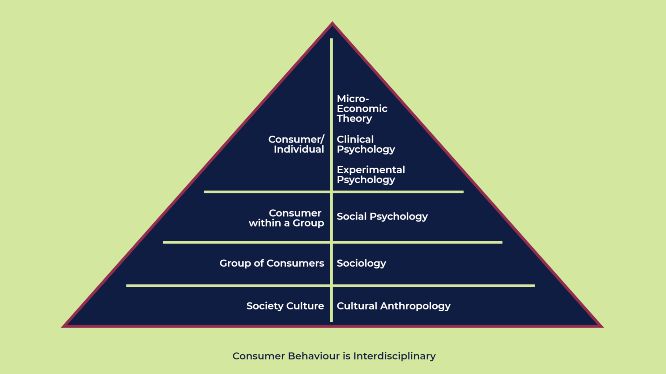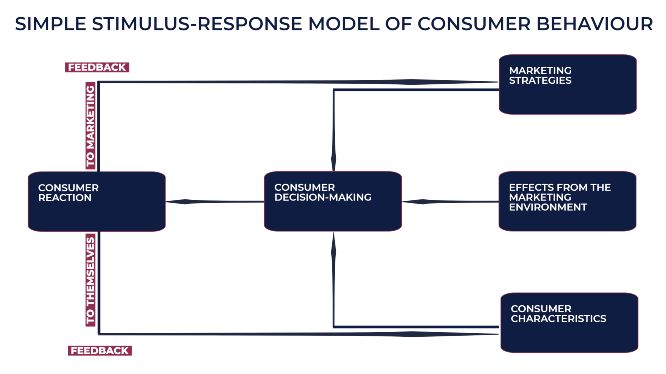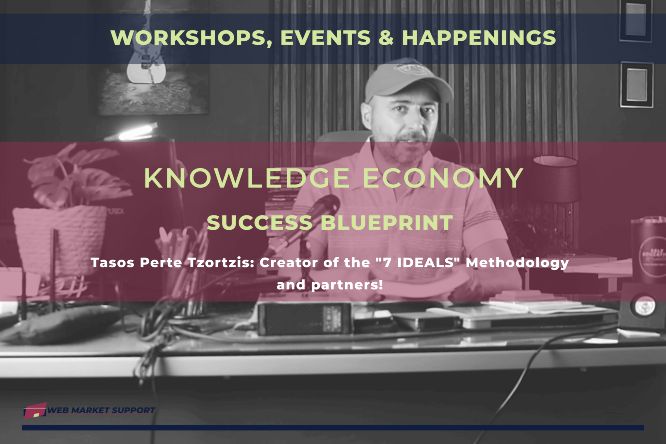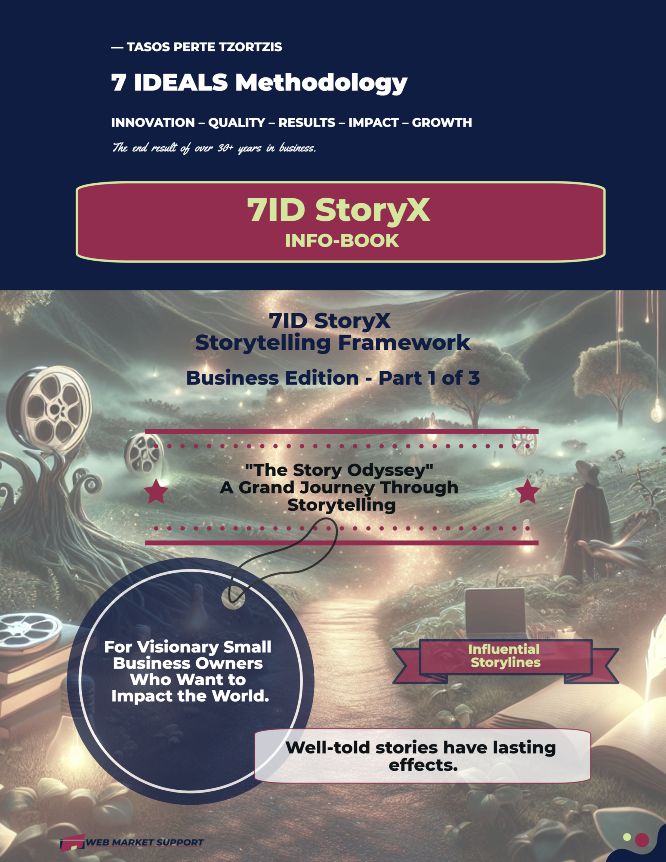In the bustling world of commerce, “consumer behaviour” stands as a crucial cornerstone for brands. It encapsulates the intricate mix of human actions, motivations, and choices when it comes to buying and utilising products and services.
But consumer behaviour is not merely a surface-level observation; it’s a multidimensional science that delves deep into the psyche of individuals as they navigate the labyrinth of decisions.
From the moment an idea takes root in a consumer’s mind to the final purchase, the journey is a dynamic interplay of emotions, perceptions, and rationality.
In this post, I give you an introduction to the world of “consumer behaviour” – a beautiful world that business owners, marketing executives and professionals, as well as sociologists, psychologists, and anthropologists, should explore in depth if they want to discover the way consumers interact with products and services, and uncover the mechanisms that drive our modern marketplace.
Are you ready?
Consumer Behaviour:
An Intro to Unveiling its Dynamics
Video Overview
Definition
“Consumer behaviour is all about how people, like you and me, make decisions when it comes to spending our resources—whether it’s time, money, or effort—on the things we buy and use in our daily lives. It’s a complex and fascinating field that delves into what we purchase, why we choose those items, when we decide to buy them, where we prefer to shop, how frequently we make these purchases, and how often we actually use what we’ve bought.
Consumer behaviour encompasses more than just the act of buying and using products or services. It also takes into account the thoughts and social influences that lead up to these actions and what happens afterwards. In the words of Leon G. Schiffman and Leslie Lazar Kanuk, two experts in the field, it’s ‘the behaviour that consumers display in searching for, purchasing, using, evaluating, and disposing of products, services, and ideas, which they expect will satisfy their needs.’
So, in essence, it’s all about how each of us acts when we’re in the process of getting and using the things we need or want. This process involves making choices, and these choices are shaped by our personal traits and the world around us.
Consumer behaviour is a vast and intricate subject. Understanding it, and truly ‘knowing’ consumers, isn’t straightforward. It’s almost impossible to predict exactly how people will behave in every situation. Yet, for marketers, influencing consumer behaviour in a positive way is the ultimate goal. The success or failure in achieving this can make all the difference in the world to marketing efforts and even the success of a business itself.”
We are all consumers and we make decisions and make our own choices about what products we will consume. We choose specific brands of products after first collecting information about all alternative brands that we are interested in so we can evaluate and compare them.
In the decision-making process, we form attitudes about the various brands (some we like a lot, some less, some not at all). After using/consuming the product, we evaluate it based on the extent to which it satisfied the need for which we bought it and thus enrich/update our memory with one more consumer experience.
In this whole process, we are not alone, or at least we do not operate, we do not decide in a vacuum. The influences we receive both from our social environment (friends, colleagues, other family members, groups to which we belong, etc.) and from the marketing environment (through advertising, sales messages and interactions, the atmosphere of the store, etc.) are decisive for the outcome of the decision-making process.
So how we act as consumers matters to us personally. However, it is also of professional interest to marketing executives.
It is important for marketers to know how consumers behaves because that way they will be able to influence them and satisfy their needs more effectively, always within the framework of the marketing ideology (marketing concept), or within the even more recent ideology of social marketing (societal marketing concept).
The term “consumer behaviour” usually refers to any human behaviour of buying and using products and services.
Consumer behaviour is a multi-layered science that investigates the consumer decision-making process.
The Study of Consumer Behaviour
Questions of the Study of Consumer Behaviour
The study of Consumer Behavior is the study of how individuals make decisions to spend their available resources (money, time, effort) on items to be consumed. That is, it includes the study of the questions:
- What do consumers buy?
- Why do they buy it?
- When do they buy it?
- Where do they buy it?
- How often do they buy it?
Factors that Contributed to the Development of the Study of Consumer Behaviour
Consumer behaviour has become an integral part of strategic marketing planning. The following factors/developments in the field of marketing in general contributed to this:
- The evolution of marketing philosophy from an emphasis on production and product… to an emphasis on marketing (The Ideology of Marketing).
- The dramatic rate of introduction of new products
- The shorter product life cycles
- The high failure rate of new products
- The increased interest in consumer protection from private special interest groups and public policymakers
- The increased interest in the effects of products on the natural environment
- The adoption of marketing practices by non-profit organisations and service organisations
- The availability of computers and modern statistical techniques
- The development of market segmentation techniques and their application to marketing strategy
Consumer Behaviour is Interdisciplinary
Consumer behaviour is based on ideas and theories about humans that were developed by scientists of different specialities. More specifically, 6 sciences had a very important contribution to the development of techniques for the study of consumer behaviour:
- The microeconomic theory: revolves around the model of the rational consumer. Microeconomic theory believes that consumers act to maximise their utility from using products by allocating their resources so that the price of each added unit of the product (marginal cost) is directly proportional to the satisfaction (marginal utility) for each product.
- Clinical psychology: studies the person through the prism of the psychological remnants and conflicts they have from their childhood.
- Experimental psychology: If the consumer is satisfied with the use of the brand, a positive relationship (reinforcement) occurs and the consumer is more likely to repeat the reaction in the future (buying the same brand).
- Social Psychology: It studies the individual within the group environment. The emphasis is placed on the development of the needs, attitudes and perceptions of the consumer.
- Sociology: The purchase of most products by consumers is influenced by the rules, norms, and values of consumer groups. Sociology helps us understand communications within and between groups.
- Cultural anthropology: It studies the beliefs, values and customs that determine the behaviour of members of a particular society. This science helps us by imparting ways to determine the effects of a culture’s values on product purchase decisions.
The pyramid in the figure includes those sciences corresponding to the fields of consumer behaviour in which they had the most drastic effects.

At the top of the pyramid is the consumer-individual who is the subject of study in microeconomic theory as well as clinical and experimental psychology. In the middle is the individual consumer within a group of other individual consumers. Social psychology studies the development of individual needs, attitudes and perceptions, through the lens of a group of individuals. Still further down the pyramid is the sociologist’s focus on the group as a unit of study. Closer to the base of the pyramid is the study of communities and cultures as an object of study for cultural anthropologists.
The Study of Consumer Behaviour is Absolutely Essential
Consumer Behaviour and the Consumer
For consumers themselves, the benefits that can arise from a better knowledge of the consumer’s behaviour are:
- Consumers themselves can become more aware of their needs and the market motivations
- Consumers themselves will be able to understand the nature and effects of the various sales promotion tactics used by marketing
- Buyers will be able to recognise and fully appreciate the complexity of the purchasing decisions they reache and the process through which those decisions are made
- Buyers will be able to make better decisions in terms of satisfying real – both physical and psychological – needs.
Consumer Behaviour and Marketing Strategy
For marketing executives and professionals, the benefits derived from better knowledge of consumer behaviour include;
- Marketing can gain a better understanding of the consumer’s needs, resulting in a more effective implementation of the marketing ideology. Consumer behaviour is a key driver for analysing the marketing environment to identify consumer needs as well as opportunities and threats for the business
- Consumers themselves can communicate their needs directly to marketing strategy decision-makers. Consumer behaviour helps significantly in the proper development of market research studies
- Business profits can be improved by converting real consumer needs into effective products
- Markets can be effectively segmented into smaller groups with common behavioural characteristics, or other consumer characteristics, so that consumers/targets can be selected for the product.
- Costs and wasted resources associated with new product failures can be reduced
- By designing the right marketing mix for the market/target, the product can be positioned in the market and differentiated from the competition, successfully.
It is indicative of the importance of consumer behaviour in marketing strategy that the company “Kraft Foods”, in the 1980s, when it was still independent, conducted over 5,000 consumer behaviour studies costing more than $100 million.
Consumer Behaviour and Public Policy
- We can better understand how consumers satisfy both their physiological and psychological needs through the purchase and use of products
- We can also gain a better knowledge of how it is possible to offer and ensure the free choice of consumers
- We can understand ways to encourage marketing people to provide more information about the products they market
- We can develop techniques suitable for encouraging all consumers to use existing information to make better consumer decisions
A Simple Model of Consumer Behaviour
Consumers receive stimuli from marketing activities as well as stimuli from their environment. These stimuli react mutually with the characteristics of the consumer. The result of the reactions is the creation of cognitive processes (decision-making) that lead the consumer to some reaction (reaction to the combination of all stimuli).
Therefore, the simple model presented in the figure below is a stimulus-response model, which at the same time provides feedback of information related to the reaction of the consumer on the one hand (formation of the evaluation of the product after its purchase), on the other hand to marketing (to develop new consumer approach strategies, or to improve existing strategies).

Benefits of Being Customer-Centric for Brands
Being customer-centric offers several benefits for brands, as it focuses on prioritizing and meeting the needs of customers. Here are some key advantages:
- Enhanced Customer Satisfaction: By understanding and catering to customer needs, brands can improve overall satisfaction. Satisfied customers are more likely to become repeat buyers and brand advocates.
- Brand Loyalty: Customer-centric brands build strong relationships with their customers, leading to increased loyalty. Loyal customers are more likely to stick with a brand, even in the face of competition.
- Increased Customer Lifetime Value: By continuously meeting and exceeding customer expectations, brands can increase the lifetime value of a customer. This involves not only acquiring new customers but also retaining and maximizing the value of existing ones.
- Increased Sales: Satisfied and loyal customers are more likely to buy again and again. They become a reliable source of revenue for the brand. Understanding customer needs allows brands to offer complementary products (cross-selling) or upgraded versions (upselling), increasing the average transaction value.
- Positive Brand Reputation: Brands that prioritize their customers tend to develop positive reputations. Positive word-of-mouth, online reviews, and customer testimonials contribute to a strong brand image.
- Better Understanding of Customer Needs: Customer-centricity involves actively listening to customers and obtaining feedback. This understanding allows brands to tailor products, services, and experiences to better align with customer preferences.
- Adaptability to Market Changes: Customer-centric brands are more adaptable to changes in the market. They can quickly respond to shifts in consumer behaviour, preferences, and industry trends, staying ahead of the competition.
- Competitive Advantage: Brands that consistently provide exceptional customer experiences gain a competitive edge. This advantage can be a significant differentiator in markets where product and service offerings are otherwise similar.
- Higher Conversion Rates: When customers feel valued and understood, they are more likely to convert from leads to paying customers. Customer-centric strategies can optimize the sales process and improve conversion rates.
- Reduced Customer Churn: Customer-centric brands focus on retaining customers by addressing their concerns and providing ongoing value. This helps reduce customer churn rates and ensures a more stable customer base.
- Long-Term Relationships: Customer-centric strategies focus on retaining existing customers by consistently delivering value. This leads to longer and more stable relationships. Satisfied customers often become advocates for the brand, recommending it to others. This word-of-mouth marketing contributes to long-term brand success.
- Innovation and Product Development: Actively seeking customer input and feedback fosters improvements and innovation. Brands that involve customers in the product development process can create offerings that better match market demands.
Overall, adopting a customer-centric approach is a strategic investment that can yield both short-term and long-term benefits for a brand’s success and sustainability.
Resume
The development of marketing strategies should be closely intertwined with the fullest possible understanding of consumers’ needs and the way in which they make their decisions. After all, the Ideology of marketing itself considers that the purpose of its operations is to satisfy the needs of consumers.
If marketing executives do not fully recognize the needs of consumers how will they be able to satisfy those needs better than their competitors?
Recognising the needs of consumers is not only essential for marketers but for business owners as well. Satisfied customers are the lifeblood of any successful business. The owner plays a crucial role in understanding customer needs, expectations, and feedback, ensuring the company abides by ethical business practices, follows the high standards of the business code of conduct, is authentic and transparent, delivers (and overdelivers) massive value to the market, and maintains strong customer relationships. The primary role of a business owner involves customer focus and value-driven philosophy.
That’s exactly the spirit inside the 7 IDEALS methodology – it’s a customer-centric and value-driven approach.
Have in mind that everything in business starts with marketing and more specifically, with market research, and the first step in this process is understanding our customers – think about it, without customers there is no business.
That’s exactly the first step in my methodology. I define our target market – a group of customers with common characteristics and purchasing behaviour on which we’ll focus our marketing activities.
More information about this process can be found on the 7 IDEALS Blueprint – #1 7ID ZONE.

Tasos Perte Tzortzis
Business Organisation & Administration, Marketing Consultant, Creator of the "7 Ideals" Methodology
Although doing traditional business offline since 1992, I fell in love with online marketing in late 2014 and have helped hundreds of brands sell more of their products and services. Founder of WebMarketSupport, Muvimag, Summer Dream.
Reading, arts, science, chess, coffee, tea, swimming, Audi, and family comes first.
















0 Comments